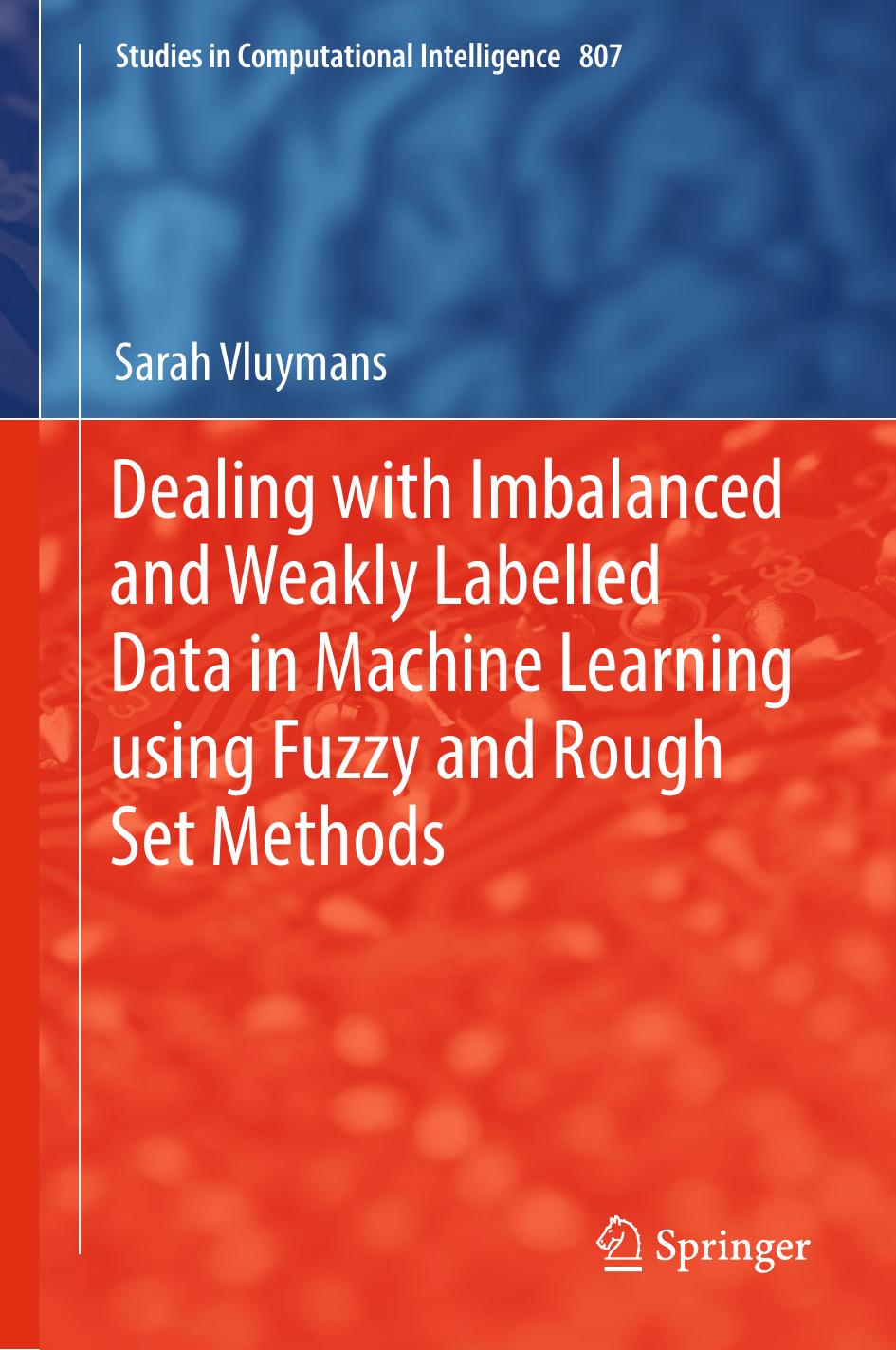Dealing with Imbalanced and Weakly Labelled Data in Machine Learning using Fuzzy and Rough Set Methods by Sarah Vluymans

Author:Sarah Vluymans
Language: eng
Format: epub, pdf
ISBN: 9783030046637
Publisher: Springer International Publishing
© Springer Nature Switzerland AG 2019
Sarah VluymansDealing with Imbalanced and Weakly Labelled Data in Machine Learning using Fuzzy and Rough Set MethodsStudies in Computational Intelligence807https://doi.org/10.1007/978-3-030-04663-7_6
6. Multi-instance Learning
Sarah Vluymans1
(1)Department of Applied Mathematics, Computer Science and Statistics, Ghent University, Gent, Belgium
Sarah Vluymans
Email: [email protected]
The domain of multi-instance learning (MIL) deals with datasets consisting of compound data samples. Instead of representing an observation as an instance described by a single feature vector, each observation (called a bag) corresponds to a set of instances and, consequently, a set of feature vectors. The instances within a bag can represent different parts or alternative representations of the same object. Initially proposed in [127], the MIL domain has developed into a mature learning paradigm with many real-world applications. A comprehensive overview can be found in the recent book [217].
In this chapter, we propose multi-instance classifiers based on fuzzy and fuzzy rough set theory. Our methods classify unseen bags using either instance-level or bag-level information. We first provide an introduction to MIL in general in Sect. 6.1 and to multi-instance classification in Sect. 6.2. Our fuzzy multi-instance classifiers are described in Sect. 6.3, while Sect. 6.5 defines our fuzzy rough multi-instance methods developed for class imbalanced multi-instance data. These two sections provide a complete overview of our algorithms and their proposed internal parameter settings.
We conduct a thorough experimental validation of our proposals. A high number of experimental results are included and, for the sake of clarity, we divide the experimental study into two main parts. Sections 6.4 and 6.6 compare the different internal settings of our fuzzy and fuzzy rough set methods respectively and explain why certain choices for the given parameters are more appropriate than others. We report these after the sections introducing our frameworks, such that Sects. 6.3 and 6.4 both consider our fuzzy methods, while Sects. 6.5 and 6.6 are on the fuzzy rough set based classifiers. In Sect. 6.7, with lessons learnt from Sects. 6.4 and 6.6, we compare our methods to existing multi-instance classifiers on both balanced and imbalanced multi-instance datasets. Finally, Sect. 6.8 sums up our conclusions.
We have aimed to retain a clear structure in the large amount of material included in this chapter, which consists of four parts (followed by the conclusion in Sect. 6.8), summarized as follows:1.Sections 6.1 and 6.2 serve as introduction to the topic of multi-instance classification.
Download
Dealing with Imbalanced and Weakly Labelled Data in Machine Learning using Fuzzy and Rough Set Methods by Sarah Vluymans.pdf
This site does not store any files on its server. We only index and link to content provided by other sites. Please contact the content providers to delete copyright contents if any and email us, we'll remove relevant links or contents immediately.
Algorithms of the Intelligent Web by Haralambos Marmanis;Dmitry Babenko(8521)
Test-Driven Development with Java by Alan Mellor(7363)
Data Augmentation with Python by Duc Haba(7261)
Principles of Data Fabric by Sonia Mezzetta(7006)
Learn Blender Simulations the Right Way by Stephen Pearson(6942)
Microservices with Spring Boot 3 and Spring Cloud by Magnus Larsson(6774)
RPA Solution Architect's Handbook by Sachin Sahgal(6175)
Hadoop in Practice by Alex Holmes(6030)
The Infinite Retina by Robert Scoble Irena Cronin(5881)
Jquery UI in Action : Master the concepts Of Jquery UI: A Step By Step Approach by ANMOL GOYAL(5872)
Big Data Analysis with Python by Ivan Marin(5700)
Life 3.0: Being Human in the Age of Artificial Intelligence by Tegmark Max(5401)
Pretrain Vision and Large Language Models in Python by Emily Webber(4659)
Infrastructure as Code for Beginners by Russ McKendrick(4444)
WordPress Plugin Development Cookbook by Yannick Lefebvre(4174)
Functional Programming in JavaScript by Mantyla Dan(4123)
The Age of Surveillance Capitalism by Shoshana Zuboff(4114)
Embracing Microservices Design by Ovais Mehboob Ahmed Khan Nabil Siddiqui and Timothy Oleson(3963)
Applied Machine Learning for Healthcare and Life Sciences Using AWS by Ujjwal Ratan(3937)
